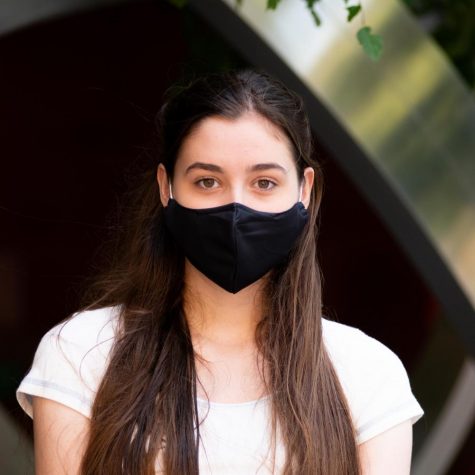At the Baltimore City Juvenile Justice Center, a 17-year-old incarcerated teenager and three other boys in his unit spend their days speaking to each other through a crack at the bottom of their door instead of interacting face-to-face. Since staff members and at least two other youths at the center have contracted COVID-19, the boys have eaten, slept and used the bathroom in their rooms to limit human contact as much as possible, but have often found themselves without soap. When the boys do leave their rooms — mainly to shower — they reuse the same masks they were initially given.
Since COVID-19 has wreaked havoc on the world, many have turned their attention to the public health risks that correctional facilities pose, including the Centers for Disease Control and Prevention. As a result, several states have released sick, vulnerable and/or nonviolent inmates from adult jails, including New Jersey, New York, Ohio and Oklahoma. However, many states have failed to take similar steps to protect juveniles in correctional facilities from the pandemic.
Earlier this month, the Pennsylvania Supreme Court denied a petition to release vulnerable and nonviolent juveniles from detention centers across the state. Rather than issuing statewide guidance for releasing the approximately 2,000 juveniles in question, the Supreme Court insisted that county officials should continue to review cases individually. Officials in Maryland also denied a similar petition, while in New York, juveniles have been shuffled between different facilities in an attempt to follow social distancing protocol instead of being granted release like adult inmates have been.
The rationale behind these decisions to keep youth in juvenile detention centers rather than issuing statewide release orders apparently stems from a desire to provide every child with individualized care. In Pennsylvania, the Supreme Court emphasized that allowing children’s cases to be evaluated on a county-by-county basis means that children’s unique circumstances are taken into account, which can ultimately prevent children from being forced to return to unstable or unsafe homes.
Despite the importance of protecting children from unsafe homes, keeping youth in detention centers as COVID-19 rapidly infects people isn’t safe either. As with adult incarceration facilities, the close quarters, communal bathrooms and cafeterias make social distancing impossible in juvenile detention centers. In order to combat this, many detention centers have resorted to forcing children to stay in their cells alone for roughly 23 hours a day.
This is essentially solitary confinement, which is known to cause significant psychological distress and has even been classified as torture. In addition to the immense psychological impact of solitary confinement, leaving children alone in their cells for hours on end puts them in physical danger. Last summer, Layleen Cubilette-Polanco –– an incarcerated adult at Rikers Island –– died from an epileptic seizure after being left unmonitored in her cell. Individuals who are put in solitary confinement are also at higher risk for self harm and suicidal thoughts.
Not only that, but many children in youth detention centers already have histories of trauma and neglect and a significant number have underlying health concerns, including pregnancy and asthma. Cognitive or intellectual delays are also common among incarcerated youth. While states deny petitions to release low-level juvenile offenders — of which an estimated 13,500 incarcerated youth are — many children who have already been subject to abandonment and are at risk of experiencing complications if they contract COVID-19 are being forced to endure traumatizing conditions as they watch adults around them contract the virus.
To be sure, there are legitimate obstacles to releasing juveniles from detention centers. Released children need safe spaces to stay with adequate supervision and resources. Screening juveniles for release also requires officials to look over thousands of cases, which is bound to take some time. In some states, many juveniles have not been released yet simply because the process has been slowed down by court closures.
Still, states can utilize group homes and residential facilities for the children who don’t have stable homes to return to. State officials can also expedite the process by issuing statewide guidance for reviewing juvenile court cases and directing county judges to expedite the review process, as officials in Maryland did just last week. While statewide guidance does not solve the problem immediately, blanket guidelines at least ensure that juveniles across the state are able to access the same procedures, rather than leaving their release in the hands of county judges — whose decisions can vary widely.
There is no excuse for leaving children in detention centers while COVID-19 puts them in immediate danger. It is crucial that states act now to streamline the process of releasing low-level juvenile offenders from detention centers. While leaders are understandably burdened by COVID-19, they have already moved to release adult inmates, as well as implemented other public health measures with immediacy, in the face of the crisis. It is imperative that state leaders stop overlooking the emotional and physical health of juveniles and release them from these traumatizing environments with the same immediacy that they are addressing other health-related concerns.
Opinions expressed on the editorial pages are not necessarily those of WSN, and our publication of opinions is not an endorsement of them.
Email Helen Wajda at [email protected].
























































































































































